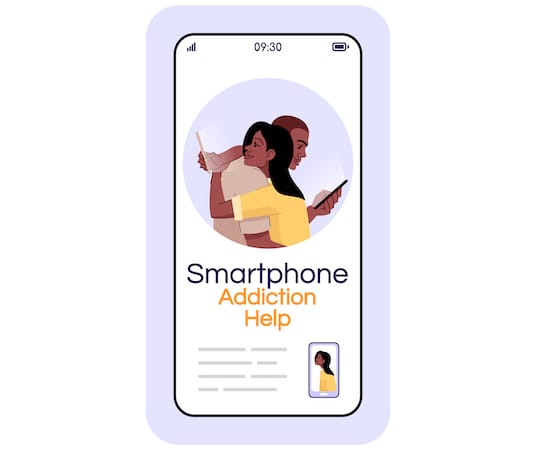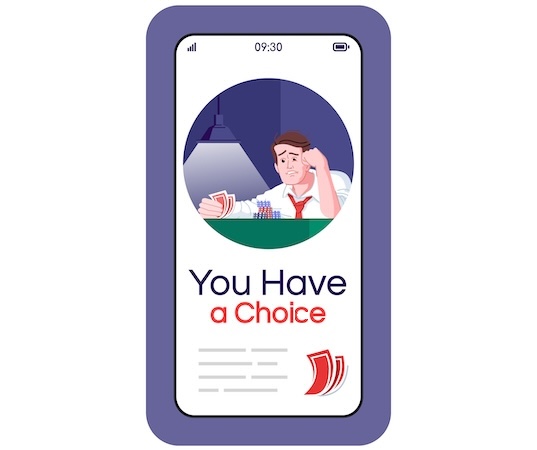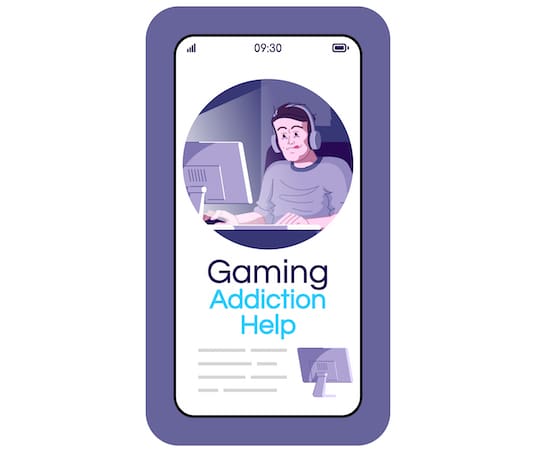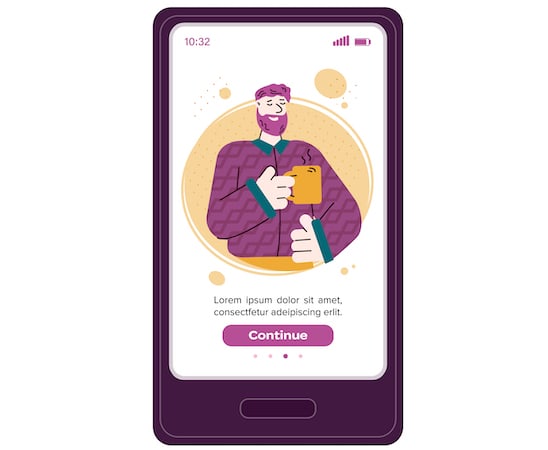As we navigate into the digital realm, addiction recovery has found a new ally – smartphone applications.
According to the Substance Abuse and Mental Health Services Administration (SAMHSA), nearly 20.3 million Americans battled a substance use disorder in 2018. Moreover, a recent survey by the Pew Research Center shows that 81% of Americans now own a smartphone.
The intersection of these statistics highlights an untapped potential for digital solutions in aiding addiction recovery. This emerging sphere of addiction recovery app development offers a groundbreaking approach, leveraging technology to support individuals on their journey to sobriety and harnessing the ubiquity of smartphones to provide help anytime, anywhere.
Top Takeaways:
- Partnering with certified professionals specializing in Cognitive Behavioral Therapy (CBT) is the key to creating a successful addiction recovery app that provides scientifically-backed assistance to users on their journey to recovery in the digital age.
- Utilize existing no-code and low-code technologies wisely and creatively to build an addiction recovery app, incorporating clinically verified techniques. No need to reinvent the wheel.
- Engaging with the target audience and collecting feedback is crucial in creating a user-friendly and effective app. Constant communication and iteration are critical to success.
Table of Contents:
1. Addiction Recovery App Market Overview
2. Addiction Recovery App Must-Have Features
3. 7 Steps to Create an Addiction Recovery App
- Step 1: Strategize
- Step 2: Design a Prototype
- Step 3: Move Forward to a Proof of Concept
- Step 4: Reassess Your Initial Vision
- Step 5: Proceed to Agile Development
- Step 6: Release
- Step 7: Maintain
4. How Much Does it Cost to Develop an Addiction Recovery App?
7. Topflight’s Experience in Addiction Recovery App Development
Addiction Recovery App Market Overview
The global surge in smartphone usage and the alarming rise in substance use disorders has created a unique crossroads in the healthcare sector. But what if we could utilize this crossroad to our advantage? Welcome to the world of addiction recovery apps, a digital solution with the potential to revolutionize the fight against addiction.
With the rise in demand for such apps, the market for addiction recovery application development is rapidly growing. According to a study by Grand View Research, Inc., the global addiction treatment market size was valued at USD 7.05 billion in 2019 and is expected to grow at a CAGR of 5.2% from 2020 to 2027.
Market Trends
There are several key trends driving the growth of addiction recovery apps, creating an opportune environment for entrepreneurs and CEOs of mental health clinics looking to develop mobile and web apps for addiction recovery.
- Increased Awareness and Openness about Mental Health: As the societal stigma surrounding mental health and addiction decreases, there is a growing acceptance and awareness of these issues. This heightened awareness is driving the need for accessible, stigma-free platforms, like recovery apps, that can provide support and resources.
- Demand for Personalized Healthcare: The trend of personalized healthcare is becoming more prevalent as individuals seek solutions tailored to their unique needs. An addiction recovery app can provide customized recovery plans and resources, making it an attractive proposition for users.
- The Rise of Telemedicine: The COVID-19 pandemic has accelerated the adoption of telemedicine, leading to a surge in demand for healthcare apps. This trend is likely to continue post-pandemic, given the convenience and accessibility that healthcare app development offers.
- Increased Smartphone Penetration: With growing smartphone ownership, particularly in developing regions, the potential user base for recovery apps continues to expand.
- The Emergence of AI and Chatbots: Artificial Intelligence (AI) and healthcare chatbots are becoming increasingly integrated into healthcare apps. These technologies can provide real-time support, answer queries, and even track user’s progress in their recovery journey, enhancing the user experience and effectiveness of the app.
Apple’s latest Apple Watch and the Health app updates have again emphasized mental health’s growing importance. By adding new features dedicated to addressing mental well-being, Apple has recognized the immense opportunity in this space. This move by a major player in the tech industry signifies that the market for mental health-focused apps, such as addiction recovery apps, is becoming increasingly significant.
Also Read: Wearable App Development Guide
Understanding these market trends is crucial for anyone looking to create an addiction recovery app that effectively addresses the needs of today’s users and capitalizes on this opportunity.
Related: Mental Health App Development
Types of Recovery Apps
There are various types of addiction recovery apps in the market, catering to different needs and preferences. Some of the most common types include:
- Support Groups: These apps provide users with a platform to connect with others who are on a similar journey, providing a sense of community and support.
- Sober Time Trackers: These apps help users track their sober days and milestones, providing motivation and encouragement for their recovery journey.
- Virtual Therapy: With the rise of telemedicine, virtual therapy apps have become increasingly popular. These apps connect users with licensed therapists who can provide support and guidance on their addiction recovery.
- Mental Health Education: Some apps focus on educating users about mental health and addictions, providing information, resources, and tools to help individuals gain a better understanding of their condition.
When planning to create an app for addiction recovery, we can take a blended approach, incorporating elements from various types of applications to better serve their users. Instead of being limited to one category, you can mix and match features from support groups, sober time trackers, virtual therapy, and mental health education to design a more comprehensive and user-friendly tool.
This way, your app can cater to the diverse needs of individuals on their journey to recovery, thus providing a more personalized and meaningful experience.
Top 3 Successful Addiction Recovery Apps
To better understand what makes an addiction recovery app successful, let’s look at three of the top-performing apps in this space.
Sober Time
- Overview: Sober Time is a popular app that helps users track their sober days and celebrate milestones. It also provides motivational quotes, daily reflections, and other helpful resources to encourage users on their recovery journey.
- Features: Customizable sobriety date, daily inspirations and reflections, sober day tracker, progress stats, and community support forum.
- Benefits: Sober Time utilizes gamification elements to motivate users and make the recovery process more engaging. The community support forum allows users to connect with others who understand what they’re going through, providing a sense of belonging and support.
Nomo – Sobriety Clocks
- Overview: Nomo is an app that helps users track their sobriety and create personalized clocks to celebrate milestones. It also offers features such as motivational quotes, daily challenges, and resources for recovery.
- Features: Sobriety clock tracker, goal setting, rewards, daily challenges, motivational quotes, resources and links for support.
- Benefits: Nomo’s customizable goals and rewards feature allows users to set their own milestones and celebrate them in a way that is meaningful to them. The daily challenges add an element of gamification, keeping users engaged and motivated on their journey to recovery.
Recovery Path
- Overview: Recovery Path is a virtual therapy app that connects users with licensed therapists for online counseling sessions. It offers a range of therapy options, including text, video, and audio messaging.
- Features: Unlimited messaging with a therapist, video and audio sessions available, specialized programs for addiction recovery, and personalized treatment plans.
- Benefits: Recovery Path combines the convenience of telemedicine with the support and guidance of a licensed therapist, making it an attractive option for individuals seeking professional help in their recovery journey. The specialized programs for addiction recovery provide tailored support and resources to address specific needs.
SoberBuddy
- Overview: SoberBuddy is an evidence-based virtual recovery coach that supports individuals in their journey towards sobriety. It caters to those struggling with any drug or alcohol addiction, providing daily challenges and guidance tailored to their unique journey.
- Features: Personalized daily challenges to help maintain sobriety; evidence-based content and tips to support recovery; an engaging interface that promotes regular interaction and progress tracking; accessible on multiple devices for support whenever and wherever it’s needed.
- Benefits: SoberBuddy acts as a constant companion in the user’s path to recovery. The personalized daily challenges keep users engaged and encourage positive habits. The app’s evidence-based approach ensures the advice given is backed by scientific research. With its easy accessibility, SoberBuddy provides invaluable support to users wherever they are, making it a critical tool in their sobriety journey.
Addiction Recovery App Must-have Features
If you’re looking to build an app for tracking addiction recovery, there are several key features that you must consider incorporating. These elements not only enhance the user experience but also significantly contribute to the app’s effectiveness in supporting the recovery journey. Let’s delve into what these must-have features are.
- Sobriety Counter: This feature tracks your sober time down to the second. It’s a motivational tool that helps users visualize their progress.
- Community Connection: These apps often have features that allow users to connect with others who are also on the path to recovery. This can help create a sense of community and support.
- Education: Many apps provide information about drug and alcohol addiction, helping users better understand their situation and the steps toward recovery.
- Relapse Prevention: Certain apps include features to help manage cravings and prevent relapses, such as mindfulness exercises or motivational reminders.
- Personalized Journey: Some apps offer a personalized recovery journey tailored to people struggling with specific types of addiction. This can include personalized resources, community groups, and therapy options.
- Habit Building: Apps like “I Am Sober” not only track sober days but also assist in building new habits, providing ongoing motivation for users.
- Digital Tools: Some apps provide digital versions of recovery tools, such as the 12 Steps AA Companion, which includes a digital version of the Alcoholics Anonymous (AA) guide.
While these features are found in many addiction recovery apps, it’s important to remember that an app should never replace professional medical advice or treatment. It’s always best to consult a healthcare provider for personalized advice and treatment options.
To make an addiction recovery app, we can incorporate not only these essential elements but also additional features that align with your organizational objectives and user needs:
- Profile Creation: This allows users to set up personal profiles, storing their recovery progress, goals, and personalized plans in one easily accessible place.
- Reminders/Push Notifications: These can be customized to remind users of milestones, motivate them with positive affirmations, or prompt them to check in daily and keep their recovery on track.
- Chatbot: A virtual assistant that can respond instantly to users’ questions, offer advice, and guide them through recovery resources available in the app. Read more on how to build a chatbot in a dedicated blog.
- Location Awareness: This feature can help users locate nearby meetings or addiction recovery support groups, enhancing their recovery journey with real-world connections.
- Separate App for Clinicians and Mentors: A separate platform for professionals who provide support and guidance, streamlining their interactions with users and enhancing their ability to assist.
- Rewards and Stats: Gamification aspects that celebrate progress, such as badges or awards for milestones reached and statistical analysis of a user’s recovery journey, which can motivate and encourage continued progress.
7 Steps to Create an Addiction Recovery App
To build an addiction recovery app, we need a strategic blend of technology, psychology, and user-focused design. It’s not just about coding an app—it’s about crafting a digital support system that can make a tangible difference in users’ lives. Here’s a quick recap of the major steps in the development process:
| Step | Description |
|---|---|
| 1. Strategize | Define your target audience, objectives, and critical app features to address users’ recovery needs. |
| 2. Design a Prototype | Create a visual mock-up to outline the app’s user interface and experience. |
| 3. Move Forward to a Proof of Concept | Develop a simple version to validate your ideas and gather initial feedback. |
| 4. Reassess Your Initial Vision | Use feedback from the proof of concept to refine or pivot your strategy as needed. |
| 5. Proceed to Agile Development | Iteratively code, test, and refine your app to meet user needs and expectations. |
| 6. Release | Launch your app to the market and begin acquiring users while preparing for ongoing improvements. |
| 7. Maintain | Continuously update the app, address user feedback, and ensure its long-term relevance. |
As we delve into the steps to build an addiction recovery app, we’ll explore how to incorporate critical features, ensure user engagement, and ultimately create an app that can be an integral part of the recovery journey. Let’s set the foundation for building an addiction recovery app that truly makes an impact.
Step 1: Strategize
Before you dive into developing a recovery app, it’s crucial to have a detailed strategy in place. This involves identifying your target audience, outlining clear objectives, and defining critical features of the app. Ask yourself, “What problems will this app solve for users? How can it add value to their recovery journey?”
Step 2: Design a Prototype
The next step is designing a prototype of your app. This is essentially a preliminary visual mock-up that gives you a tangible idea of what the final product will look like. It’s a chance to flesh out your visions and get a sense of the user interface and experience.
Step 3: Move Forward to a Proof of Concept
Once you have a prototype, you can proceed to the proof of concept stage. This involves developing a simple version of your app to demonstrate its feasibility and potential effectiveness. It’s an opportunity to validate your ideas and gauge initial user reaction.
Step 4: Reassess Your Initial Vision
Following the proof of concept, it’s time to reassess your initial vision. Based on user feedback and traction, you may need to pivot or refine your strategy. Don’t be afraid to make changes if they will improve the final product.
Step 5: Proceed to Agile Development
The agile development phase involves coding, testing, refining, and iterating on your app. This flexible approach allows for continuous improvement and adaptation, ensuring the final product meets the user’s needs and expectations.
Step 6: Release
After thorough testing and refining, you’re ready to release your app. This crucial stage involves launching your product in the marketplace and beginning to acquire users. Remember, the release is just the beginning – ongoing adjustments and improvements are crucial to success.
Step 7: Maintain
The final step of the app development process is maintenance. This involves ongoing updates, handling user feedback, troubleshooting any issues that arise, and continuously improving the app. Maintenance ensures your app remains practical and relevant in a rapidly evolving digital landscape.
With the right strategy and technological expertise, it’s entirely feasible to make an app for drug addiction recovery that can significantly contribute to users’ wellness journeys, providing them with the tools they need to regain control of their lives and move towards a healthier future.
How Much Does it Cost to Develop an Addiction Recovery App?
The investment required to develop an addiction recovery app can fluctuate considerably, contingent on several aspects, such as the intricacy of the app, the variety of features incorporated, and the specific technology utilized in its development. With the proper strategic planning and technical expertise, it’s entirely possible to develop an app to help with addiction recovery that can be a potent tool in the wellness journey of numerous users.
A fundamental aspect that needs to be taken into account is the development approach. If we use cutting-edge technology (like AI or IoT), the cost can be relatively high. Nevertheless, we can work around this with a proof of concept, which can be realized within a budget range of $50K-80K, particularly by applying no-code or low-code technologies. This approach allows us to create a simple, functional version of your app to validate its feasibility without the high costs usually associated with full-scale app development.
Once the proof of concept has been validated and you’re ready to move on to a Minimum Viable Product (MVP), the investment scale typically ranges around $130K-$150K. The MVP phase involves incorporating more advanced features and functionality, providing a more user-centered design, and ensuring the app’s robust performance.
It’s important to note that these costs are estimates, and the final costs may vary. The financial commitment may seem substantial, but remember that an effectively designed and developed addiction recovery app has the potential to revolutionize the recovery journey for many individuals.
Related: App Development Cost Breakdown
As the app gains traction and begins to monetize, it can provide an excellent return on investment, making a significant difference not only in users’ lives but also in the success of your mental health clinic.
Monetization Strategies
The right monetization strategy can contribute significantly to the success of your addiction recovery app. It’s not just about generating revenue—it’s also about creating a sustainable business model that allows for continuous improvement and expansion of your app. Here are some effective monetization strategies to consider for your addiction recovery app:
- In-App Purchases: This involves selling goods or services within the app. For example, users could have the option to purchase additional recovery resources or access advanced features.
- Subscriptions: Offering premium content or features on a subscription basis is a popular option. This can provide a steady stream of revenue and allow users to customize their experience according to their needs and budget.
- Sponsorships and Partnerships: Partnering with relevant organizations or brands can provide an additional revenue stream. This could involve featuring sponsored content or advertising partners’ products or services within your app.
- Affiliate Marketing: This involves earning a commission by promoting other companies’ products or services. For instance, you could recommend relevant books or recovery programs and earn a commission for each purchase made through your app.
Also Read: App Monetization Strategies Guide
Consider your target audience, their willingness to pay, and the value each monetization strategy can bring your users before you start a healthcare startup. Remember, the goal is not just to generate revenue but also to provide value to your users and support them in their recovery journey.
Challenges and Pitfalls
When it comes to addiction recovery mobile app development, partnering with the right specialists and leveraging existing technologies can be two of the most common challenges.
Form strategic partnerships
Partnering with certified addiction counselors and clinicians is vital. These professionals bring to the table evidence-based Cognitive Behavioral Therapy (CBT) techniques, a cornerstone in the field of addiction recovery.
These techniques to help overcome addiction, when incorporated into your application, can turn it into a powerful tool that provides consistent, personalized, and accessible support for those on their journey toward recovery.
The involvement of pros ensures your app isn’t just technologically proficient but also psychologically sound and effective. This blend of tech and expertise forms the backbone of a truly transformative recovery tool.
Moreover, partnering with app developers with a proven track record in medical chatbot development is paramount to creating an advanced, user-friendly, and HIPAA-compliant application that meets the specific needs of your target audience and stands out in the competitive marketplace.
No Need to Reinvent the Wheel
In the realm of digital health technology, many ready-made tools already exist that can cover most features of an addiction recovery app, saving development time and costs. Some of these readily available tools include:
- Chatbot platforms: Tools like ChatGPT, Dialogflow, or Microsoft Bot Framework can be used to build AI-powered chatbots that offer interactive therapy sessions, tracking progress, and providing personalized feedback. Read more about how to build a mental health chatbot in our dedicated blog.
- Telehealth SDKs: Tools such as Twilio or VSee offer ready-to-use SDKs that can be integrated to provide secure video conferencing capabilities, facilitating remote counseling sessions.
- Community Platforms: Tools like Discourse or Vanilla Forums can be utilized to create support communities within the app, providing a safe space for users to share their experiences and gain peer support.
- Mood Tracking APIs: Tools like Moodpath or Daylio meet the requirement for mood and emotion tracking, enabling users to record their emotional states and triggers over time.
- Gamification platforms: Tools like Bunchball or Gametize can be utilized to incorporate gamification aspects, encouraging users to stick to their recovery goals by making the process more engaging and rewarding.
Keep an eye out for new technologies that align with your de-addiction app development strategy. For example, Apple’s recent innovation, the Journaling Suggestions API, presents a valuable opportunity for app developers in the digital health space.
This feature leverages machine learning algorithms to rapidly assimilate user experiences into personal activity trackers, thus enhancing the user’s journey through recovery. By incorporating this feature into your addiction recovery app, you will streamline the user’s experience and provide a personalized recovery approach, making the process more intuitive and supportive. This is another example of how leveraging existing technologies can make a meaningful difference.
Topflight’s Experience in Addiction Recovery App Development
At Topflight, we’ve had the privilege of working on a groundbreaking project, SoberBuddy. This highly interactive and user-friendly app was designed to make the journey to recovery less daunting for individuals battling addiction.
The key to success was creating a chatbot that could empathize with users as effectively as a real therapist would. Our efforts paid off significantly. Since our partnership, SoberBuddy raised $1 million in funding, boosted user retention by 300%, increased average engagement time by 40%, improved its app store ranking from 3 to 4.5 stars, and increased its user count to over 30,000.
This project was not just about fixing bugs and UX/UI flaws; it was about giving the bot a second life. We rebuilt SoberBuddy from the ground up, shifting from Ionic-Angular to React Native. This shift made it easier to maintain and upgrade the app and enabled us to build a CMS that visualizes a complex decision tree and streamlines bot management.
The result? A virtual recovery coach living on patients’ phones, providing invaluable support. This project is a testament to our dedication and expertise in mobile and web app development within the healthcare industry. We’re proud to have played a part in modernizing personal and group recovery and helping SoberBuddy reach more people in their journey toward sobriety.
If you’re ready to start an addiction recovery app and help transform lives, don’t hesitate to reach out to us at Topflight. We’re here to turn your vision into a reality.
Frequently Asked Questions
Why should I consider incorporating a chatbot into my recovery app?
A chatbot can provide consistent, personalized, and interactive support to users on their recovery journey, making therapy sessions accessible round-the-clock. It can track progress, provide personalized feedback, and even include CBT techniques to help overcome addiction. Truly, a chatbot can turn your app into an intuitive and supportive tool for recovery.
What are the advantages of leveraging existing technologies in addiction recovery app development?
By leveraging existing technologies, you can save significant development time and costs. There’s a wealth of ready-made tools available, covering features like AI-powered chatbots, telehealth capabilities for remote counseling, community platforms for peer support, mood tracking, and gamification. These tools can greatly enhance the user experience and efficacy of your recovery app.
Is there a recommended tech stack for developing an addiction recovery app?
There isn’t one specific tech stack that is recommended for developing an addiction recovery app. The best approach is to choose tools and technologies based on the unique needs and goals of your app, as well as what will provide the most effective user experience. Consult with a software development company like Topflight to determine the best tech stack for your particular project.



